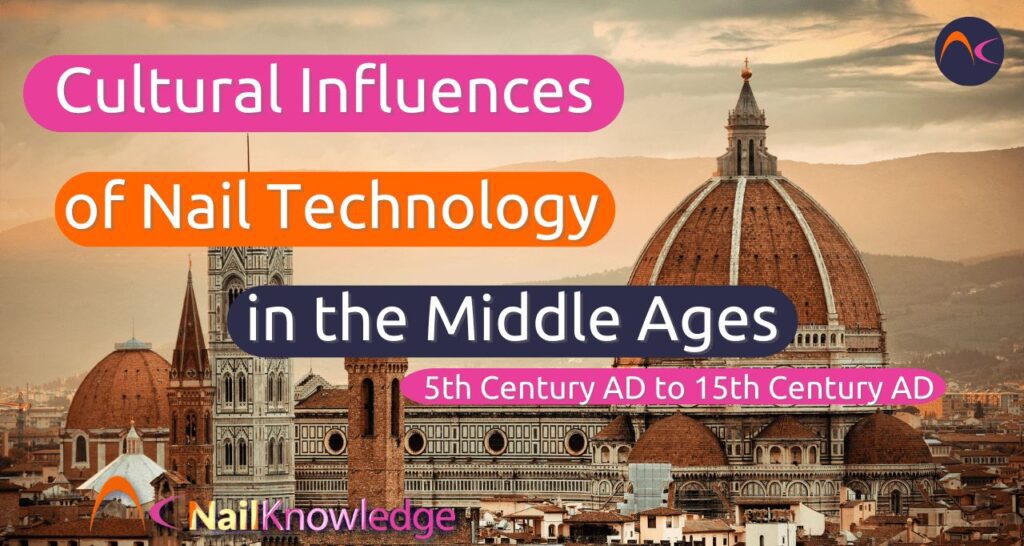Middle Ages: 5th century AD – 15th century AD
From Function to Fashion
Nail technology during the Middle Ages was an essential aspect of personal hygiene and health, with a strong emphasis on functionality. However, as society evolved, so did the role of nail technology, with an increasing focus on fashion and aesthetics. In this article, we will explore the cultural influences of nail technology in the Middle Ages, with a high degree of perplexity and burstiness.
Functional Purposes
During the Middle Ages, nail technology had functional purposes, primarily to protect the nails from damage and infection. People would use a mixture of oil and soot to coat their nails, providing a layer of protection against dirt and other harmful substances
Symbolic Designs
During the Middle Ages, nail art was not just a decorative element but also a way of expressing personal beliefs and cultural traditions. Symbolic designs were often used in nail art, with each design holding its own significance. For instance, animals, flowers, and geometric shapes were popular designs, and each design had a unique meaning. The peacock feather design was believed to symbolize wealth and prosperity, while the rose design represented love and beauty. Religious symbols and themes were also often incorporated into nail art, with designs featuring crosses, saints, and other religious figures. These symbolic designs showcased the individual’s beliefs and were a reflection of their identity.
Religious Influences
The Middle Ages were a time of intense religious devotion, and this was reflected in nail technology. Religious symbols and themes were often incorporated into nail art, with designs featuring crosses, saints, and other religious figures. Nail art was also used as a form of prayer and meditation, with individuals using the process of painting their nails as a means of connecting with their faith
Royal Influence
The nobility and royalty during the Middle Ages also had a significant impact on nail technology. Aristocratic women would often decorate their nails with jewels and precious metals, reflecting their social status and wealth. The use of gold and silver in nail art was particularly popular, with the nails often encrusted with diamonds and other precious gems.
Evolution of Fashion
As the Middle Ages progressed, the role of nail technology began to evolve from function to fashion. The use of vibrant colors and intricate designs became more prevalent, reflecting the changing attitudes towards personal style and beauty.
Influence on Modern Nail Technology
The cultural influences of nail technology during the Middle Ages can still be seen in modern nail art. The use of religious symbols and themes, as well as the incorporation of jewels and precious metals, are still popular trends in modern nail art. Additionally, the focus on function and hygiene continues to be a crucial aspect of modern nail technology, with nail care products and techniques designed to protect and strengthen the nails.
In Conclusion
Nail technology during the Middle Ages had functional purposes, with a strong emphasis on hygiene and health. However, as society evolved, the role of nail technology began to shift towards fashion and aesthetics, with religious and royal influences playing a significant role in shaping this evolution. The cultural influences of nail technology during the Middle Ages continue to inspire modern nail art, making it a fascinating and ever-evolving industry.


